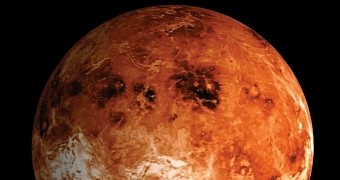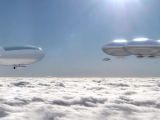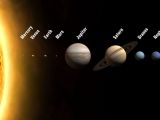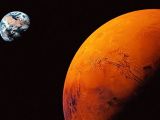Earlier this month, NASA tested a spacecraft that it hopes will one day carry astronauts to Mars. The thing is that, as it turns out, the Red Planet isn't the only celestial body in the Solar System NASA hopes will soon receive human visitors.
On the contrary, word has it that, should things go as planned, astronauts will sometime in the not too distant future pay a visit to Venus. Thus, in a recent report, NASA's Systems Analysis and Concepts Directorate details plans to send a crew to this planet as well.
The details of NASA's planned trip to Venus
By the looks of it, the idea is to send astronauts to Venus aboard a spacecraft that will make it possible for them to hover over the planet at a distance of about 50 kilometers (roughly 30 miles) from its surface. Presently, this spacecraft goes by the name the High Altitude Venus Operational Concept.
Scientists with NASA's Systems Analysis and Concepts Directorate describe this Venus spacecraft as a blimp fitted with solar panels on top. Mind you, they have even released an image detailing what the spacecraft would look like. The image in question is included in the gallery below.
It is estimated that, while hovering over Venus at the planned altitude, the astronauts and their spacecraft would be exposed to a pressure of just one atmosphere and temperatures of about 75 degrees Celsius (roughly 167 degrees Fahrenheit).
Unlike on Mars, however, they would not have to worry about dangerous levels of radiation. Thus, specialists with NASA expect radiation levels would be roughly the same as those in Canada. On Mars, however, it is a well-known fact that radiation is 40 times stronger than on Earth.
Interestingly enough, it looks like NASA does not expect such a Venus mission to be a simple two-way trip. Thus, the idea is to place the HAVOC spacecraft in Venus' orbit and then have other vehicles carry astronauts to and from it, kind of like space ferries.
Not the friendliest planet in the Solar System
Admittedly, radiation levels on Venus are way lower than on Mars. Besides, Venus is a wee closer to Earth than the Red Planet. Still, this does not change the fact that this celestial body that NASA hopes astronauts will one day visit is not exactly the most welcoming in the Solar System.
On the contrary, Phys Org tells us that temperatures on the surface of Venus are so hot that they can melt lead. As if this weren't enough, the local atmospheric pressure is 92 times greater than the one documented on Earth and sulfuric acid clouds are a common sight.
Add to this the fact that lightning bolts, earthquakes, and volcanic eruptions occur on Venus pretty on a regular basis, and it's no wonder some people are questioning the success of such a mission. Hopefully, NASA will soon provide a more detailed account of what its planned Venus mission would entail.
Until then, check out the video below to get a better idea of NASA's plans for the future.

 14 DAY TRIAL //
14 DAY TRIAL // 




